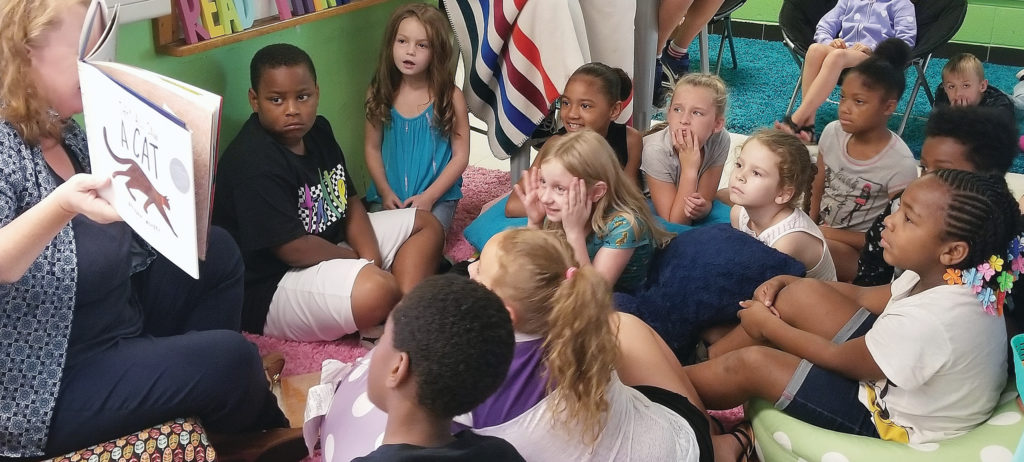By Dawn Miller
After third grade, more than 85 percent of the school curriculum is taught by reading, says Maggie Luma, coordinator of the West Virginia Campaign for Grade Level Reading.
“Third-grade reading is one of the highest predictors of high school graduation,” Luma told about 50 Read Aloud West Virginia volunteers at Read Aloud’s sixth annual summit at Canaan Valley State Park in July. “Eighty-eight percent of our high school dropouts were struggling readers in the third grade.”
The Campaign for Grade Level Reading’s goal is to increase the percentage of children reading proficiently by the end of third grade by 5 percentage points each year. Literacy specialists offer evidence-based help to teachers, schools and communities.
Here’s another data point: vocabulary development by age 3 predicts achievement by third grade, Luma said. So reading to babies from birth, singing, rhyming, talking and naming things with your toddler actually contributes to their school success later in life.
“Unfortunately, 74 percent of those students who are falling so behind in third grade are never going to catch up,” Luma said. “That doesn’t mean that by the end of third grade we forget about those students, but it means we really need to be thinking about prevention.”
“What is the solution?” Luma asked. “Maybe you could buy a reading program, right? We’re all looking for that magic bullet, the newest thing to come out of Pearson or Houghton Mifflin or wherever it is that is going to get all our kids reading. We’re going to put them on a computer, right? And get them all to be playing games so that they know how to read. I think if that were the case, we’d all be reading, right?
Students need a more intentional approach, she said. “Instead of buying a new program, instead of just praying a little bit harder, we could do what the research tells us.” We could use evidence-based literacy practices:
- Deliver explicit instruction. That means telling students what they’re learning in words they understand. “Make the learning goal visible,” she said. “Yes, we need to develop a love for reading, but they’re not going to develop that love if they can’t decode.”
- Increase practice turns and feedback. “Let’s get the students talking more. They need increased discourse,” she said. “They need to be talking about what they’re learning.” They also need a teacher on hand to give immediate feedback: “That’s wrong. This is what’s right. Let’s try it again.”
- Design instruction for students’ needs, but we really need to know where the students are before we do that, she said.
- Work collaboratively. “We know we have one major goal, and that’s get our kids reading by the third grade. But there are so many ways that we can get there. Our job at the Campaign for Grade Level Reading is to support teachers, to support schools and to support communities with a roadmap. Here’s what we’ve learned. Here’s what the research says, and here’s what we are going to provide supports in, so you can take what you need according to your specific data and apply it to your reading instruction.”
“I think Read Aloud West Virginia speaks to my heart because it shows children authentic reading and why they need to be readers, because it brings joy,” Luma said.
“You enjoy what you read. You learn about what you read. And I really think this needs to be our message when we are talking to students. You don’t just need to learn this to learn it. It’s because words are powerful. Words have meaning, and you can use them to change the world.
“Literacy is one of the biggest antidotes to poverty,” she said. “Literacy becomes the currency for all other learning.”
— Dawn Miller, a classroom reader in Kanawha County, is Read Aloud’s operations director.


